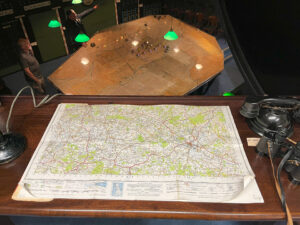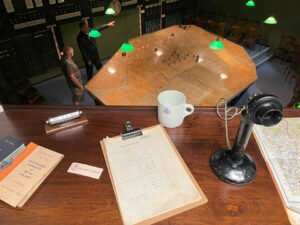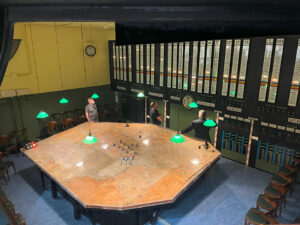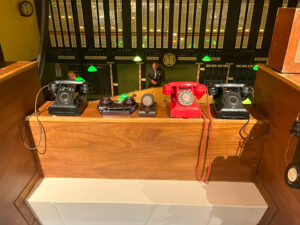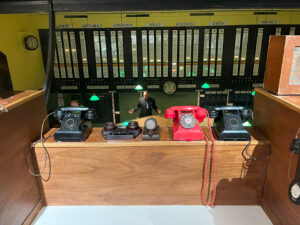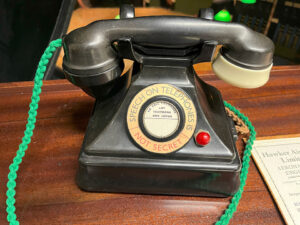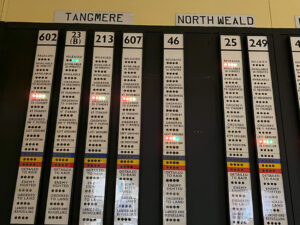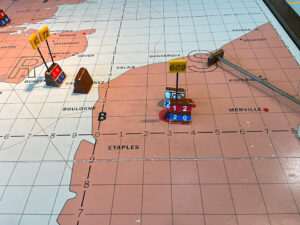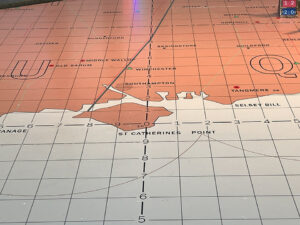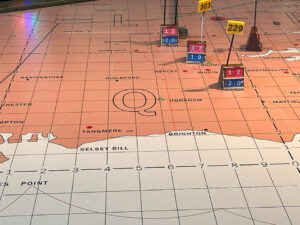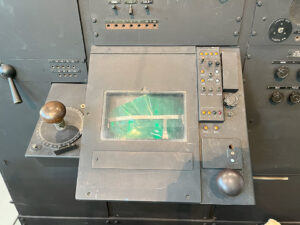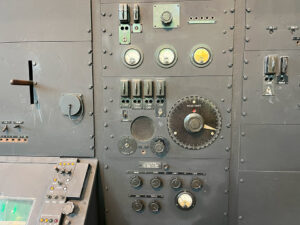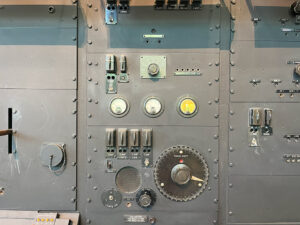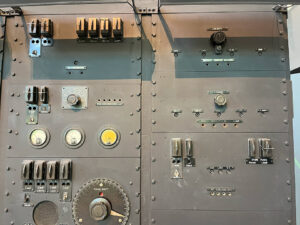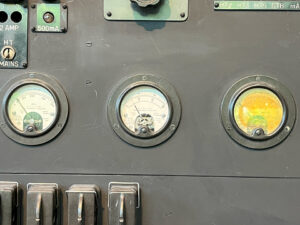
 My visit to the Battle of Britain Bunker, RAF Uxbridge. May 2025:
My visit to the Battle of Britain Bunker, RAF Uxbridge. May 2025:
The Battle of Britain Bunker, located at RAF Uxbridge, is an underground operations room that played a crucial role during the Second World War. It served as the command centre for No. 11 Group Fighter Command, directing fighter aircraft operations throughout the conflict. Most notably during the pivotal Battle of Britain and the D-Day landings.
The Bunker lies 60 feet underground and is accessed via a staircase of 76 steps. All essential utilities, electricity, water, telephone lines, and sewage, are routed along this stairwell through a network of pipes. The structure is built with walls, floors, and ceilings approximately one metre thick, composed of reinforced concrete lined for waterproofing. Combined with around 30 feet of earth above the ceiling, the Bunker’s solid construction rendered it impervious to any bomb of the era. A ventilation and air filtration system, still operational today, was installed to supply fresh air to the Operations Room staff.
No. 11 Group played a vital role in the air defence system for several key reasons. First, as one of four group headquarters, its Operations Controller was tasked with making crucial decisions that directly influenced the outcomes of aerial battles, such as determining how many fighter aircraft to scramble, which squadrons and aircraft types to deploy, when to launch them, and from which airfields to where. Second, in its role as a group headquarters, No. 11 Group was also responsible for coordinating the operations of its seven sector stations, which served as bases for its fighter squadrons. These included RAF Kenley, North Weald, Debden, Biggin Hill, Tangmere, Hornchurch, and Northolt.
The Operations Room presented vital information through a variety of visual displays, enabling the controller to make critical decisions swiftly. The positions of both enemy and friendly aircraft formations were represented by numbered blocks on a central map table. Squadron activities within No. 11 Group—such as At Standby, Enemy Sighted, or Ordered to Land, were shown on a tote board using illuminated indicators. Weather conditions at sector stations were conveyed using a system of coloured discs, while the passage of time was tracked through a coordinated system of clocks and colour-coded signals. All data was transmitted via telephone from either Fighter Command headquarters or the sector stations.
Operations Room:
Radar equipment:
